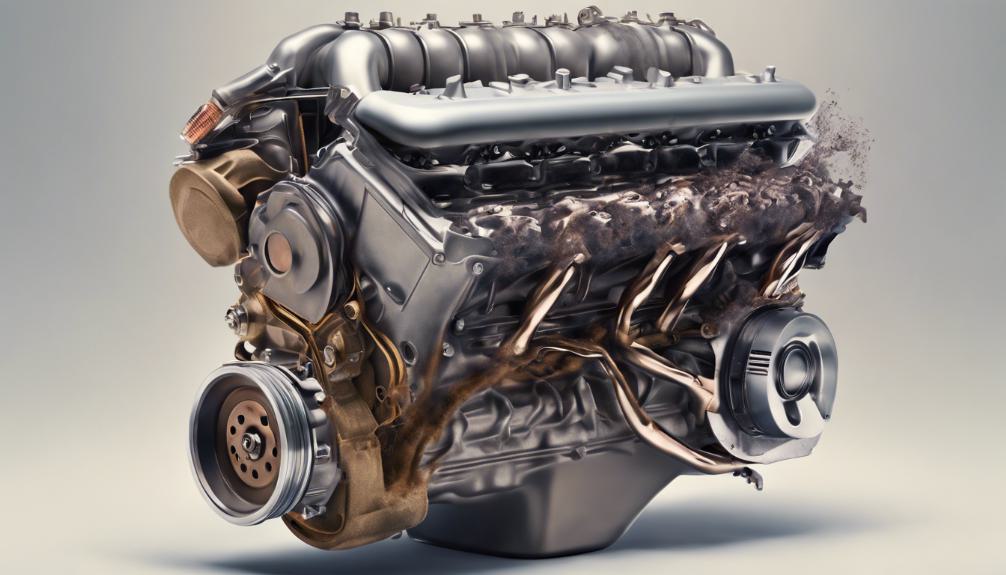If your car accelerates on its own, it could be due to pedal misapplication, throttle cable issues, air intake system problems, or a faulty throttle position sensor. Check for proper slack in the throttle cable to prevent sticking. Maintain air filter upkeep and troubleshoot vacuum leaks to sustain proper airflow. Test the Throttle Position Sensor (TPS) for malfunctions which can cause unintended acceleration. Regular maintenance of throttle components and engine diagnostics can help identify and fix acceleration issues effectively. By addressing these common causes, you can guarantee peak vehicle performance. Discover more about fixing acceleration concerns by exploring related factors for a thorough solution.
Key Takeaways
- Misaligned or sticking throttle cables can cause unintended acceleration.
- Regular air filter maintenance prevents restricted airflow issues.
- Faulty Throttle Position Sensor (TPS) can lead to automatic acceleration.
- Driver error like pedal misapplication is a common cause of unintended acceleration.
- Thorough engine diagnostics can identify and fix acceleration concerns.
Common Causes of Unintended Acceleration

If you find your car accelerating on its own, common causes of unintended acceleration may include pedal misapplication while driving. Pedal confusion, often due to driver error like pressing the gas pedal instead of the brakes, is a significant reason for unintended acceleration incidents. This issue can be exacerbated by factors such as floor mat interference, leading to a stuck accelerator. To mitigate these risks, driver training programs can help individuals become more adept at distinguishing between the gas and brake pedals, reducing the likelihood of unintended acceleration due to pedal misapplication.
In addition to driver training, manufacturers also play an important role in preventing unintended acceleration through proactive measures like recalls and safety initiatives. By addressing potential design flaws or mechanical issues promptly, manufacturers can minimize the occurrence of unintended acceleration incidents. Regular maintenance practices, such as cleaning the electronic throttle body, are also essential in preventing unintended acceleration related to throttle cable or throttle body malfunctions. By staying vigilant and proactive, both drivers and manufacturers can work together to promote safer driving experiences for everyone on the road.
Throttle Cable Issues and Solutions
Inspecting the throttle cable regularly for proper slack and functionality is crucial to prevent acceleration problems. Throttle cable issues can lead to unintended acceleration if the throttle sticks or remains open. Sticking throttle cables are often caused by dirt, debris, or mechanical wear, impacting the vehicle's throttle response.
To address these issues, consider performing throttle cable adjustments and utilizing cable lubrication techniques. Regular maintenance and cleaning of the throttle cable can help avoid sudden acceleration problems. Promptly addressing any throttle cable issues not only prevents safety hazards but also ensures smooth vehicle operation.
Air Intake System Problems

When addressing air intake system problems, ensuring proper functioning is essential to maintain peak engine performance. Here are some key steps worth noting:
- Air Filter Maintenance: Regularly check and replace the air filter as a clogged filter can restrict airflow, impacting engine performance and potentially causing unintended acceleration.
- Vacuum Leaks Troubleshooting: Inspect all vacuum hoses for any signs of wear, cracks, or disconnections. A vacuum leak can lead to an imbalance in the air-fuel mixture, affecting engine operation and potentially causing acceleration issues.
- Idle Air Control Valve (IACV) Cleaning: During troubleshooting, cleaning the IACV can help address air intake system issues. The IACV regulates the amount of air entering the engine at idle, and a dirty or faulty valve can disrupt this process, impacting engine performance and acceleration control.
Faulty Throttle Position Sensor
A faulty Throttle Position Sensor (TPS) can disrupt the communication between your throttle and the engine control unit, potentially leading to unintended acceleration. Symptoms like rough idling, stalling, poor acceleration, or even your car accelerating on its own could indicate TPS issues.
Diagnosing TPS problems involves testing it with a multimeter to check if it's sending accurate signals to the ECU. If the readings are off, replacing the TPS is a common solution to fix acceleration concerns caused by sensor malfunctions.
TPS replacement is a relatively straightforward process in many vehicles, involving locating the sensor on the throttle body, disconnecting the wiring harness, unbolting the sensor, and installing the new one. Proper installation is essential for top-notch performance.
If you're experiencing acceleration issues and suspect a faulty TPS, diagnosing and replacing it may resolve the problem and restore your car's normal operation.
Steps to Fix Acceleration Concerns

To address acceleration concerns, guarantee thorough examination of throttle cable issues such as misalignment or sticking. If these issues persist, consider the following steps:
- Fuel System Maintenance and Tuning Adjustments:
Guarantee regular maintenance of the fuel system, including cleaning injectors and inspecting fuel filters. Consider tuning adjustments to optimize fuel delivery and air-fuel mixture for better acceleration performance.
- Driving Habits and Engine Diagnostics:
Pay attention to driving habits that may strain the engine, such as aggressive acceleration or sudden stops. Moreover, conduct engine diagnostics to identify any underlying issues affecting acceleration, such as spark plug problems or sensor malfunctions.
- Throttle Body Cleaning and Inspection:
Clean the throttle body to prevent sticking and ensure smooth throttle operation. Inspect the throttle position sensor and return spring integrity in the throttle body to maintain proper control and prevent unintended acceleration.
Regular maintenance and thorough inspections can help address acceleration concerns effectively.
As an Amazon Associate we earn from qualifying purchases.










